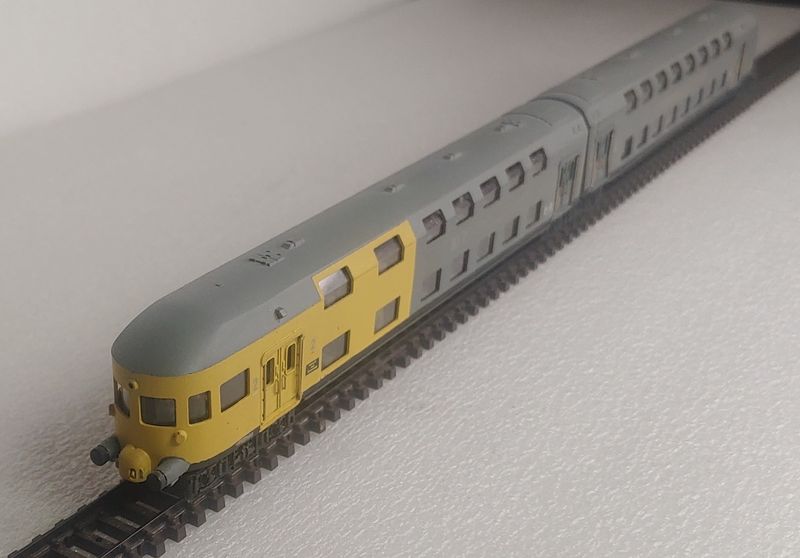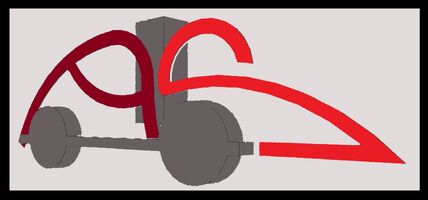LBE- Doppelstockwagen
LBE double-decker-wagon
The double-decker streamlined push-pull train of the LBE - Lübeck-Büchener Eisenbahn, which went into operation in 1936, anticipated developments in today's railway passenger traffic with several technical innovations.
In May 1936, streamlined double-decker cars were used for the first time on the Hamburg-Lübeck-Travermünde Strand route, which caused a stir around the world. They were equipped as push-pull trains with control cars and automatic Scharfenberg couplings. The two-car units had a common Jakobs bogie in the middle. At the end of 1935, the two wagon factories each delivered a double-decker wagon. The interior design followed the advice of the architect List Bertsch-kampferseck from Berlin, who had previously worked as an interior designer at Mitropa.
The wagon had second and third class compartments with tubular steel seats, with the second class compartments being marked on the outside with a yellow color scheme compared to the gray-green on the other compartments. The seats in 3rd class had alternating brown and red leather upholstery, and walls with matt polished light oak. The backrests could be folded down so that passengers could always sit facing the direction of travel. The 2nd class furnishings consisted of cushioned seats with adjustable backrests; The seats were covered in orange plush with dark dots. The success of the introduction led to a follow-up order for a further six double-decker cars and a streamlined locomotive in late summer 1936. While the cars in the first delivery had large curved windows on the driver's cabs, the second delivery was equipped with smaller driver's cab windows. The Breslauer Linke-Hofmann-Werke delivered five double-decker cars and the WUMAG in Görlitz delivered three. These streamlined passenger cars were used as a template by the DRG for their double-decker project. The Reichsbahn and Mitropa had already awarded the orders for these. Because of the approaching war, production began, but they were never completed.



